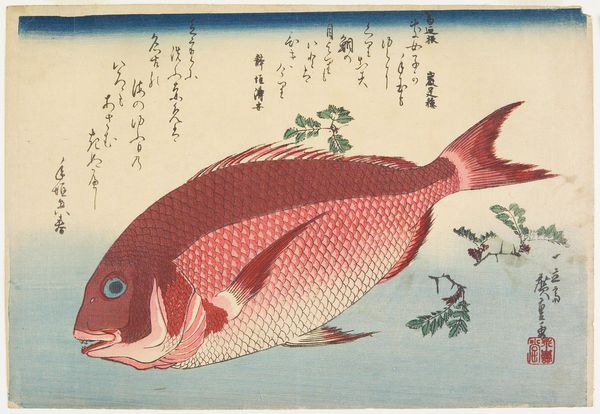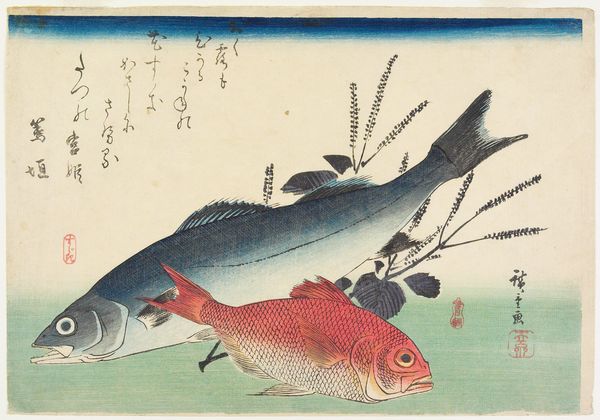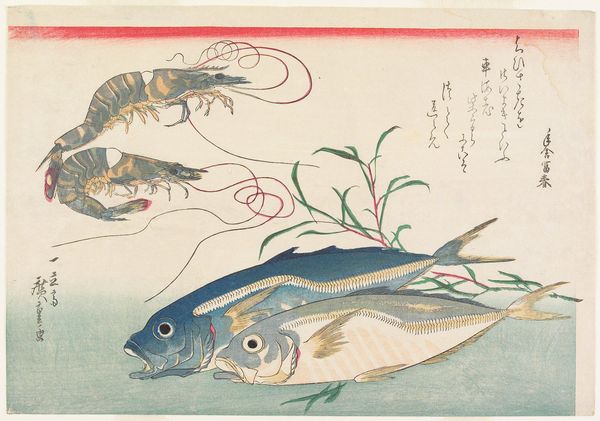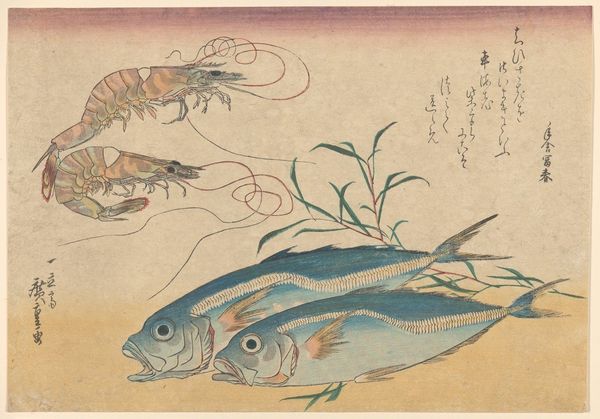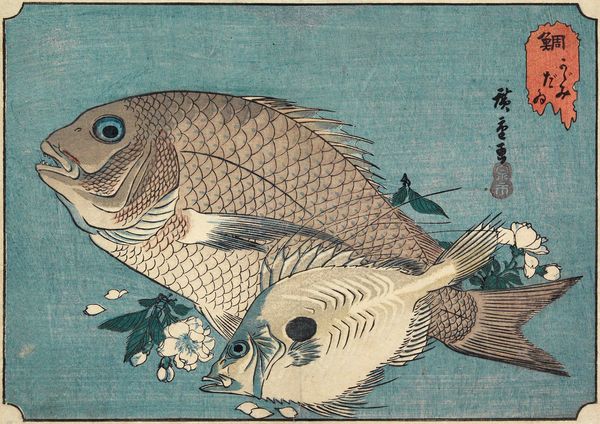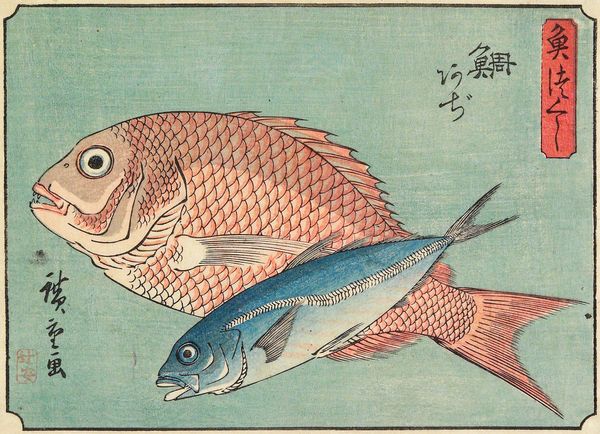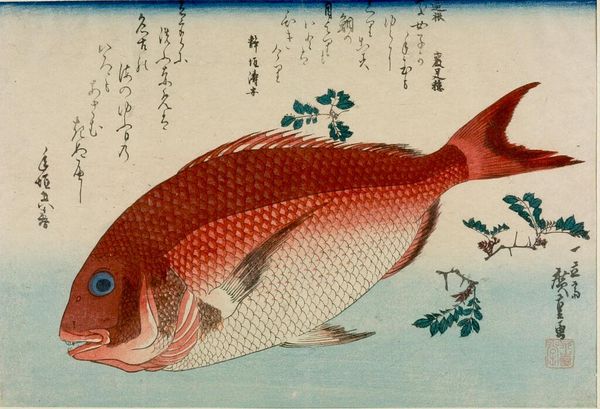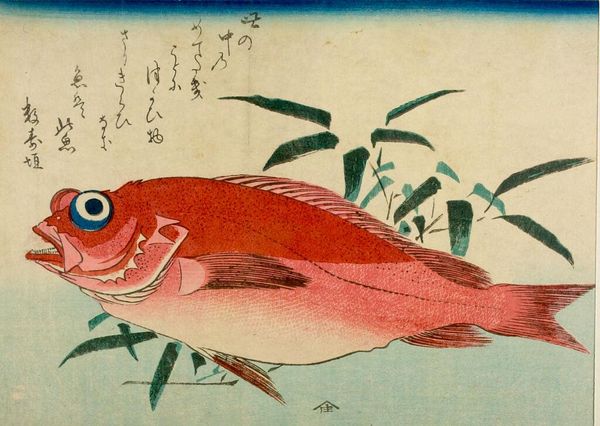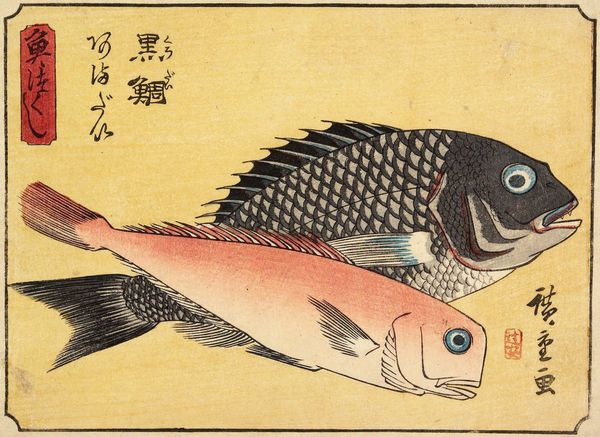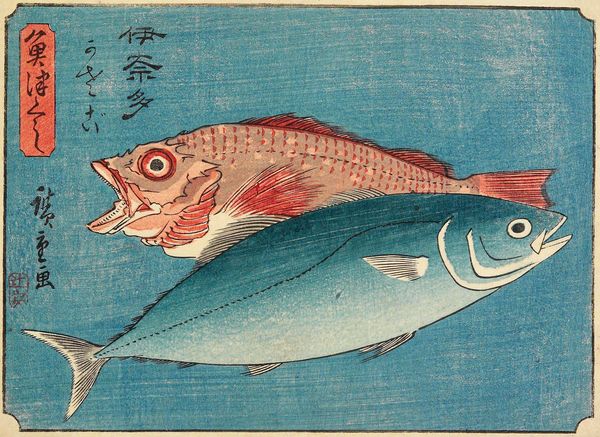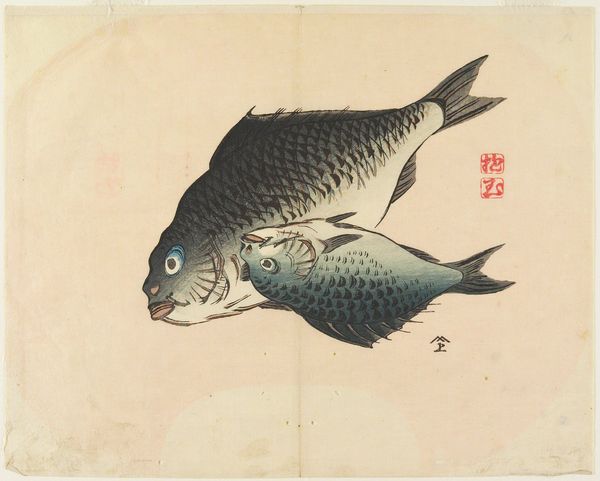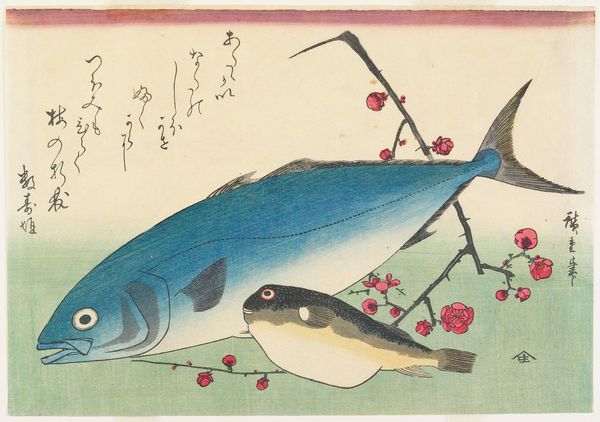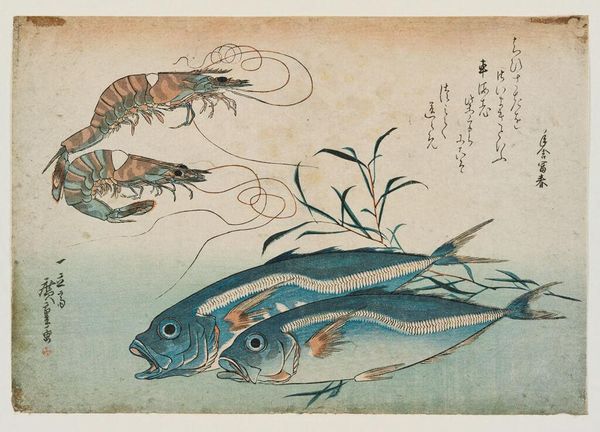
Striped Sea Bream and Fat Greenling c. 1840 - 1842
0:00
0:00
print, ink, woodblock-print
#
water colours
# print
#
asian-art
#
landscape
#
ukiyo-e
#
japan
#
ink
#
coloured pencil
#
woodblock-print
#
orientalism
#
line
Dimensions: 9 13/16 × 14 3/16 in. (24.9 × 36.1 cm) (image, horizontal ōban)
Copyright: Public Domain
Curator: The stillness is captivating. The composition focuses the viewer on the textured bodies of the two fish against a soft blue background. Editor: Indeed. This is "Striped Sea Bream and Fat Greenling," a woodblock print crafted by Utagawa Hiroshige around 1840 to 1842. The artwork now resides here at the Minneapolis Institute of Art. Considering the time, it presents a compelling example of ukiyo-e's integration into daily life and popular culture. Curator: You see that integration explicitly in the labor involved in its production. The carvers who meticulously rendered each line and the printers who layered color upon color. Think of the precise registration needed to achieve such detail with multiple blocks. The fish aren't simply aesthetic objects. They reflect a whole system of production and consumption. Editor: And the political elements implicit within these systems of artistic production are fascinating to consider. Hiroshige's print emerged in an era of immense socio-political change. Fish themselves weren't just food but symbols often deployed in artistic contexts to suggest themes of abundance, nature's gifts, and a reflection of societal well-being under the governing structures. How does the very act of depicting this food challenge or reinforce existing power dynamics? Curator: The layering of colour here also provides insight into materiality—from the sources of those pigments and the methods for their application. Look how the different colours build form with so much subtlety and precision. Even a small print demanded considerable expertise in sourcing materials and perfecting craft techniques. The paper itself speaks to broader trades. Editor: The commercial and political nature of ukiyo-e is unmistakable, created not just for individual appreciation but designed for broader distribution, playing a role in constructing perceptions of daily life under the era's social expectations and political agendas. Consider also the accessibility of prints— their relative affordability broadened art access but also expanded opportunities for dissemination of particular messages. Curator: Yes, beyond being mere representations, such artefacts become embodiments of an interconnected system. When we look at art through that lens, every delicate line and choice of hue presents itself as part of larger cultural fabric. Editor: Absolutely. By thinking critically about this artwork’s journey through different production channels and acknowledging sociopolitical factors impacting creative production and reception, we open a deeper more informed discussion around "Striped Sea Bream and Fat Greenling".
Comments
No comments
Be the first to comment and join the conversation on the ultimate creative platform.
